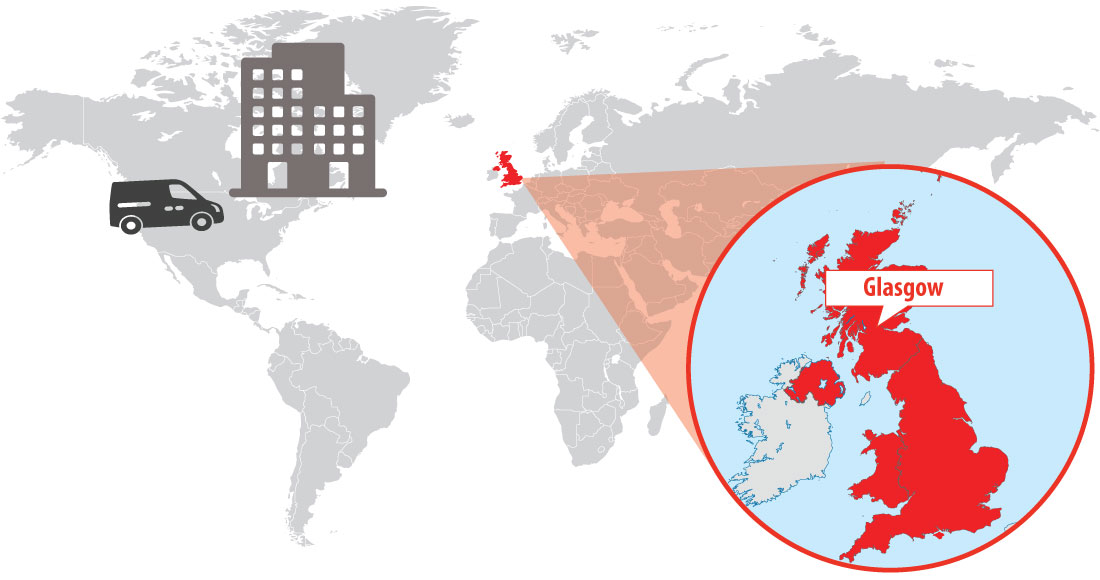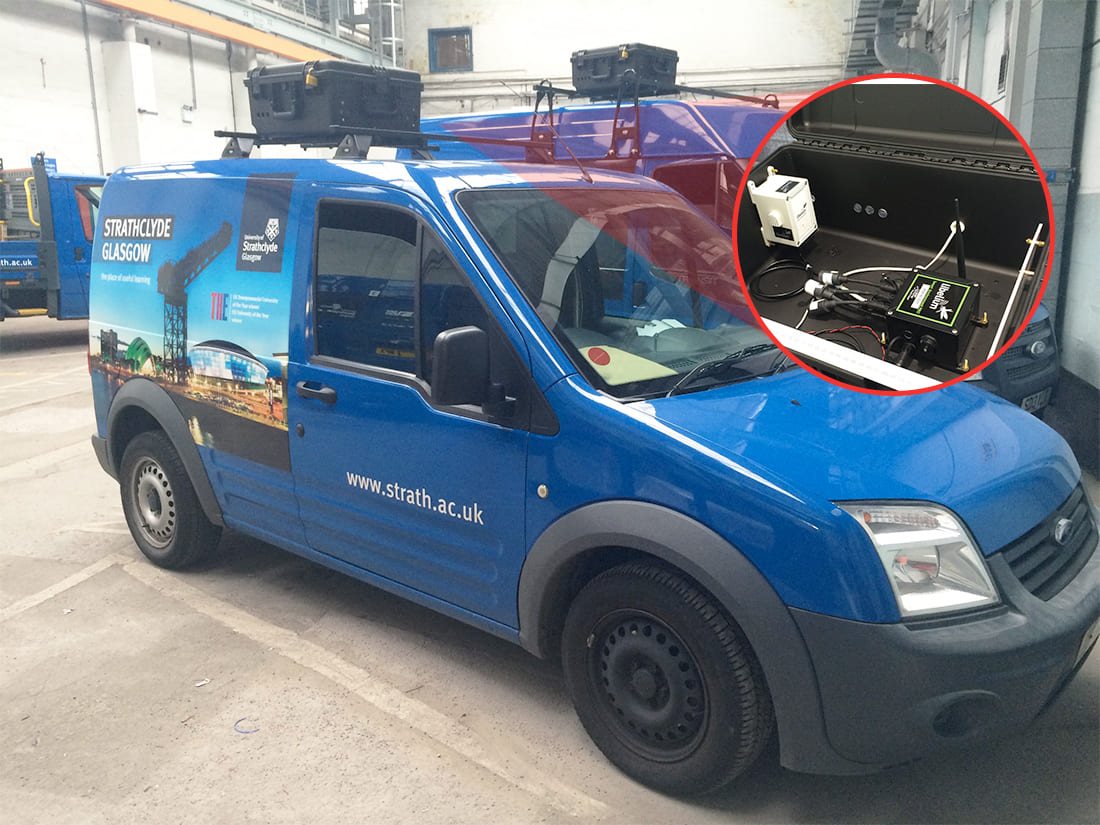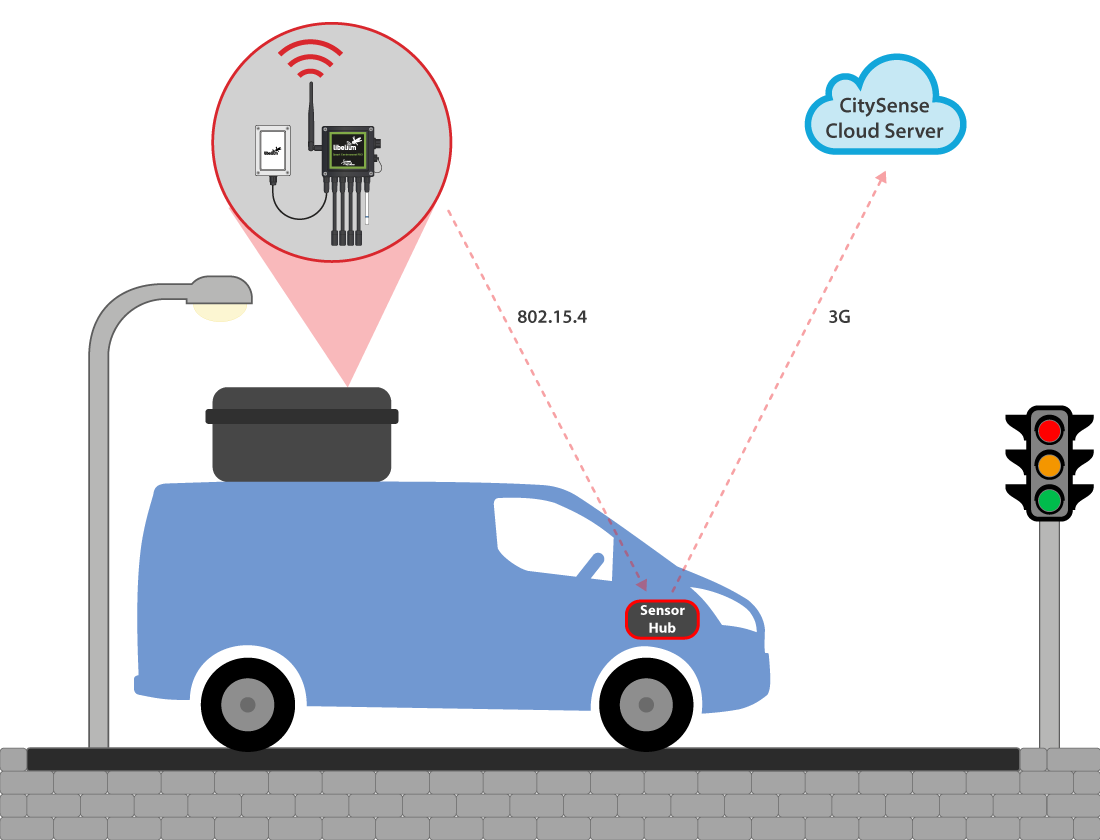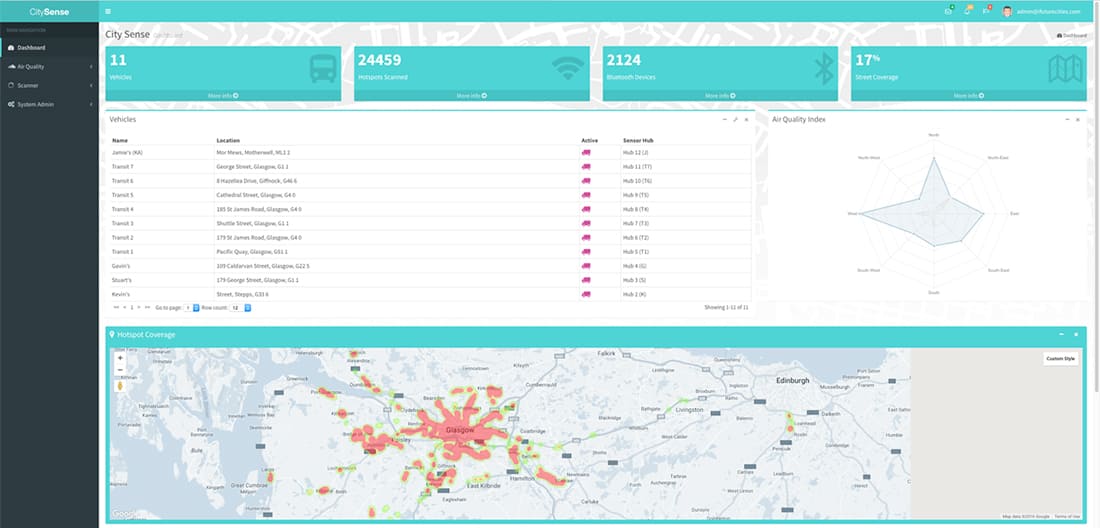Home / Success Stories / Mobile monitoring system: Vehicles with sensors to control air quality in Glasgow
Do you want this case study in pdf?
Download it in English🇬🇧 and Spanish🇪🇸 directly to your inbox.
Download
Glasgow (UK)
CENSIS, the innovation center of excellence for Sensor and Imaging Systems (SIS) technologies, has developed a low-cost system with Libelium Waspmote Sensor Platform in Glasgow (UK) that can be deployed flexibly and rapidly in mobile configurations to complement static stations providing more capillarity to Smart Cities projects.Sensors monitoring most important air parameters everywhere
CENSIS has worked in partnership with the University of Strathclyde on this project that has been called “Sensing the City”. The aim was monitoring in real time key air parameters in different areas from a city in a dynamic way. For this last reason, they thought in a mobile wireless sensor network system placed on top of the vans to move through all the city.
Mobile air quality system integrated in vans
“Our initial requirement was for sensor nodes with a variety of configuration options. From an evolution point of view, we now have the potential to add new sensor nodes or to change sensor nodes”, argues Stuart Simpson, CENSIS Senior Engineer. The sensor node consist on a box with the Waspmote Plug & Sense! Smart Environment PRO inside and also the different sensors: CO, Particle Matter – dust sensor, (PM1, PM2.5 and PM10), temperature, humidity, pressure, NO, NO2 and O3. These are some of the most important parameters to control air quality and detect gas emissions or pollutants. All the information monitored by the Waspmote Plug & Sense! Sensor Platform is sent to the sensor hub, which is located in the vehicle glove box, through 802.15.4. Its is composed by Raspberry Pi2, a GPS Antenna (to allow the tracking) and Zigbee. The information gathered is sent to the cloud via 3G and visualized in CitySense, based on Microsoft Azure IoT platform.
Air quality monitoring system functioning diagram
CitySense is a web-based user interface that allows data visualization, interaction with the cloud services and includes capability to embed data processing and analytic outputs. The Decision Support System allows to create spatial and temporal high resolution air quality maps.A low-cost deployment with great possibilities
“Sensing the City” project can provide indicative air quality data in areas without coverage in order to support identification of pollution sources. Mobile systems can also gather data in a volume and with the rapidity required to support comparison of pollution models and to identify trends. Main funcionalities of the system are:
CitySense dashboard developed by CENSIS
CENSIS Senior Engineer, Stuart Simpson, considers that Libelium technology “offers a large range of sensor nodes, which offer us the flexibility we need for the future“. The project is currently in phase 1 with future plans to grow coverage, develop analytic, extend communication protocols and optimize sensor accuracy and sensitivity – and to test in a wider range of cities. The next stage will also include other applications areas for Smart Cities apart from air quality such as road conditions monitoring, traffic management or energy conservation of buildings via thermal imaging. The final aim is developing a system able to give a whole solution for public authorities. For more information about our products contact the Libelium Sales Department.More info:
References:
Download it in English🇬🇧 and Spanish🇪🇸 directly to your inbox.
DownloadStay up to date in IoT!
Sign up to our newsletter and receive the latest, exciting news.
More than 18 years of experience in IoT support us.


















© Libelium Comunicaciones Distribuidas S.L. | Terms And Conditions | Privacy Policy | Cookies Policy | Security Policy | Reporting Channel